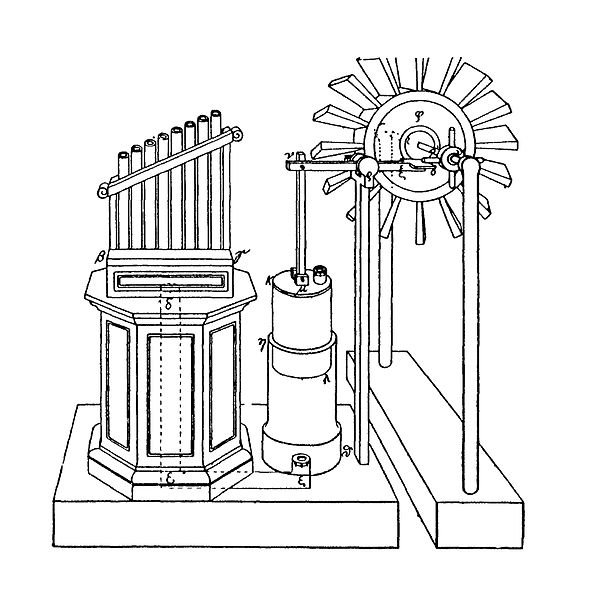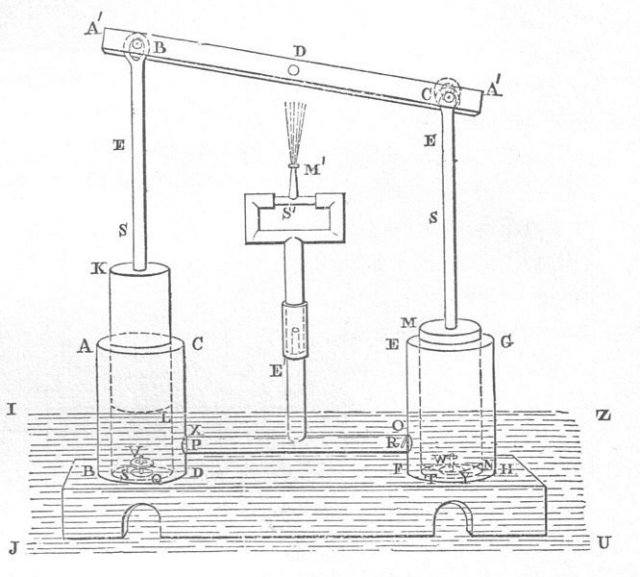Incredible Ancient Machines Invented By Hero Of Alexandria – An Engineer Far Ahead Of His Time
Ellen Lloyd - AncientPages.com - Little is known about Hero of Alexandria except that he was a remarkable ancient engineer far ahead of his time.
He invented several sophisticated machines that demonstrate his vast knowledge of mechanics.
Hero also called Heron, was a Greek mathematician. The date of his birth remains uncertain. Some authorities place his birthday early 150 BCE in Ptolemaic, Egypt. Other scholars date his birth to be 250 CE in the late Roman Empire.
As a student, Hero spent most of his time in the Library at the University of Alexandria. He loved to be in the library with a vast collection of books.
Hero of Alexandria was strongly influenced by the writings of Ctesibius of Alexandria. It is possible he was a student of Ctesibius. When older, he taught mathematics, mechanics, and physical science at the University of Alexandria.
He wrote many books and he used them as texts for his students, and manuals for technicians, and were written in Greek, Latin and Egyptian.
One of his amazing inventions is the so-called "The 'philosopher's stone' of Heron" that "changed" one liquid into another, for example, water into wine.
It consisted of an airtight vase of water which, at the top, had a tubular opening where water entered and reached the bottom and of an airtight vase of wine which, in the middle, had a tap in a siphon shape.
The two vases were connected by an intermediate small tube that entered the bottom and reached close to their top. When a certain amount of water was poured into the first vase, the air inside went through the intermediate tube to the second vase pushing out an equal amount of wine. (The tube arrangement did not allow the mixing of liquids," ('Heron, Pneumatics, A 14').
The hero is credited with the authorship of several manuscripts including Automata, the Pneumatica, the Dioptra, the Catoprica, and the Mechanica.
Hero invented a number of fascinating machines.
Standing on the shoulders of giants, it is believed that Hero studied the works of Archimedes and Vitruvius, as well as Ctesibius.
Most historians agree that some of the inventions included in Hero's manuscripts were, in fact, first created by others.
However, today it is very difficult to determine which invention was his. Therefore, for convenience's sake, most of the machines are simply referred to as "Hero's."
For example, Hero of Alexandria came up with a new invention that depended on the mechanical interaction of heat and water.
He invented a rocket-like device called an aeolipile. It used steam for propulsion. Hero mounted a sphere on top of a water kettle.
A fire below the kettle turned the water into steam, and the gas traveled through the pipes to the sphere. Two L-shaped tubes on opposite sides of the sphere allowed the gas to escape, and in doing so gave a thrust to the sphere that caused it to rotate.
In the book The Pneumatics of Hero Of Alexandria, Bennet Woodcroft, Professor of machinery in University College London lists all of Hero's inventions.
Below is just a selection of some of the machines he invented.
Hero's windwheel used the energy of passing gusts of wind to make an organ play. Unlike his steam engine, this invention did not require any great technical prowess or mechanical plays, but it did apparently require his unique insight.
It should be added that there are not any records of wind-powered machines before Hero came along.
According to the history of vending machines "Hero of Alexandria invented the first coin-operated vending machine dispensing holy water.
Hero's holy water vending machines could be found in temples across the land. These vending machines allowed each member to receive an equal allotment of holy water without requiring the presence of the priest. Hero's vending machines operated on an open valve system. When a coin was placed in the slot of the vending machine, it would rest on a platform. The weight of the coin would push the platform down, opening a valve, and dispensing a consistent trickle of holy water.
Hero's coin-operated holy water vending machines inspired the creation of many other vending machines lending to a financial gain."
This device used both heat and pneumatics to open a set of temple doors. To open the doors, the priest lit a fire on the altar, heating the air within and causing it to expand. This expansion in volume forced water out of the sphere and into the bucket, which moved downwards under the extra weight. This bucket was connected to a rope coiled around a spindle and, as the bucket moved downwards, this spindle revolved, making the doors open.
The first water pumps were probably designed by Ctesibius, as Heron frequently mentions his earlier works in his treatise. The force pump was later widely used in the Roman world for fighting fires.
He was not just a brilliant engineer. He was also an accomplished mathematician and theoretician.
He came up with the basics of what is now known as Fermat's principle. He described a principle of reflection, which stated that a ray of light that goes from point A to point B, suffering any number of reflections on flat mirrors, in the same medium, has a smaller path length than any nearby path.
As a mathematician Hero came up with the first approximation in Greece of a number's square root.
Today, his name is most closely associated with Heron's Formula for finding the area of a triangle from its side lengths. The imaginary number, or imaginary unit, is also noted to have been first observed by Hero while calculating the volume of a pyramidal frustum. He also wrote a number of books on mathematics, including Metrica.
It is almost certain that Hero taught at the Musaeum which included the famous Library of Alexandria because most of his writings appear as lecture notes for courses in mathematics, mechanics, physics, and pneumatics.
Although the field was not formalized until the 20th century, it is thought that the work of Hero, his automated devices, in particular, represents some of the first formal research into cybernetics.
He was very much an engineer and scientist far ahead of his time.
Written by - Ellen Lloyd – AncientPages.com
Copyright © AncientPages.com All rights reserved. This material may not be published, broadcast, rewritten or redistributed in whole or part without the express written permission of AncientPages.com
More From Ancient Pages
-
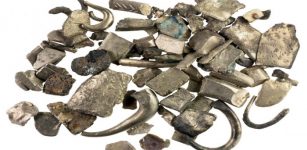 Hacksilber Hoard Dated To 11th Century BC: Eastern Mediterranean Silver Trade Reconstructed
Archaeology | Jul 5, 2021
Hacksilber Hoard Dated To 11th Century BC: Eastern Mediterranean Silver Trade Reconstructed
Archaeology | Jul 5, 2021 -
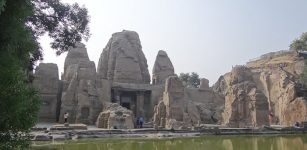 Masroor Temples – India’s Marvelous Ancient Cave Temples
Featured Stories | Jan 23, 2016
Masroor Temples – India’s Marvelous Ancient Cave Temples
Featured Stories | Jan 23, 2016 -
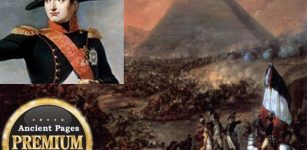 Napoleon Bonaparte’s Nightmare Vision Inside The Great Pyramid
Featured Stories | Jul 12, 2014
Napoleon Bonaparte’s Nightmare Vision Inside The Great Pyramid
Featured Stories | Jul 12, 2014 -
 Enigma Of Mount Ararat – Researchers Are Determined To Reveal The Truth To The World
Featured Stories | Jun 27, 2014
Enigma Of Mount Ararat – Researchers Are Determined To Reveal The Truth To The World
Featured Stories | Jun 27, 2014 -
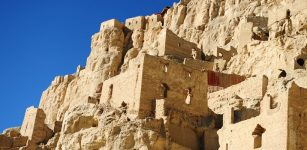 Ruins Of The Mysterious Kingdom Of Guge That Suddenly Vanished Overnight
Civilizations | Apr 10, 2021
Ruins Of The Mysterious Kingdom Of Guge That Suddenly Vanished Overnight
Civilizations | Apr 10, 2021 -
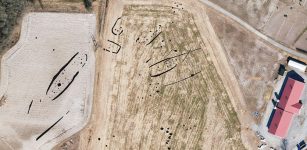 60-Meter Longhouse Discovered Near Viking Ship At Gjellestad, Norway
Archaeology | Dec 6, 2021
60-Meter Longhouse Discovered Near Viking Ship At Gjellestad, Norway
Archaeology | Dec 6, 2021 -
 Mysterious Bronze Age ‘Golden Tomb’ Unearthed In Armenia
Archaeology | Mar 3, 2023
Mysterious Bronze Age ‘Golden Tomb’ Unearthed In Armenia
Archaeology | Mar 3, 2023 -
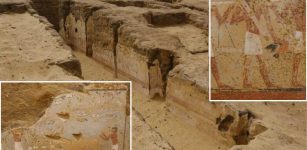 Old Kingdom Mastaba Decorated With Rare Paintings Found In Dahshur Necropolis, Egypt
Archaeology | Mar 22, 2024
Old Kingdom Mastaba Decorated With Rare Paintings Found In Dahshur Necropolis, Egypt
Archaeology | Mar 22, 2024 -
 Bizarre Sound Of A Crash Remains An Unexplained Mystery
Featured Stories | Oct 22, 2020
Bizarre Sound Of A Crash Remains An Unexplained Mystery
Featured Stories | Oct 22, 2020 -
 Ancient DNA Reveals Some Northern Europeans Came From Siberia
Archaeology | May 13, 2019
Ancient DNA Reveals Some Northern Europeans Came From Siberia
Archaeology | May 13, 2019 -
 Ancient Village Of Zalipie Where Flowers Are Painted On All Houses
Ancient Traditions And Customs | May 29, 2019
Ancient Village Of Zalipie Where Flowers Are Painted On All Houses
Ancient Traditions And Customs | May 29, 2019 -
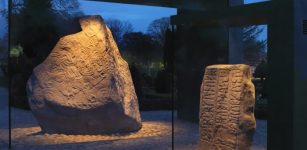 3D Scans Of Runestones Reveal The Power Of Viking Queen Thyra
Archaeology | Oct 13, 2023
3D Scans Of Runestones Reveal The Power Of Viking Queen Thyra
Archaeology | Oct 13, 2023 -
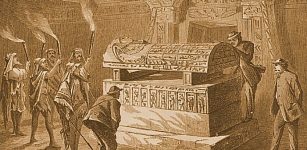 Before The Pharaohs: The Evidence For Advanced Civilization In Egypt’s Mysterious Prehistory
Civilizations | Apr 14, 2017
Before The Pharaohs: The Evidence For Advanced Civilization In Egypt’s Mysterious Prehistory
Civilizations | Apr 14, 2017 -
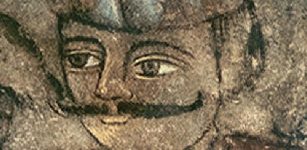 On This Day In History: Vlad II Known As Vlad Dracul (‘Vlad The Dragon’) Was Born – On August 30, 1400
News | Aug 30, 2016
On This Day In History: Vlad II Known As Vlad Dracul (‘Vlad The Dragon’) Was Born – On August 30, 1400
News | Aug 30, 2016 -
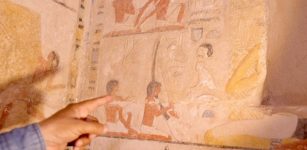 Largest And Most Complete Ancient Egyptian Workshops Found In Saqqara
Archaeology | May 28, 2023
Largest And Most Complete Ancient Egyptian Workshops Found In Saqqara
Archaeology | May 28, 2023 -
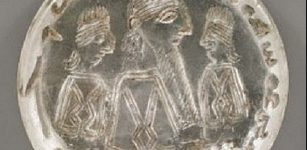 Mani: Apostle Of Light And His Ancient Rock Crystal Seal
Featured Stories | Jul 2, 2018
Mani: Apostle Of Light And His Ancient Rock Crystal Seal
Featured Stories | Jul 2, 2018 -
 Bizarre Story Of Scottish Penkaet Castle
Featured Stories | Apr 18, 2020
Bizarre Story Of Scottish Penkaet Castle
Featured Stories | Apr 18, 2020 -
 Kali – Hindu Goddess Of Death, Fear And Horror Who Destroys Ignorance, Evil And Establishes World Order
Featured Stories | Sep 28, 2021
Kali – Hindu Goddess Of Death, Fear And Horror Who Destroys Ignorance, Evil And Establishes World Order
Featured Stories | Sep 28, 2021 -
 Legacy Of The Iconic Sycamore Gap Tree – Historical Landmark At Hadrian’s Wall
Featured Stories | Mar 28, 2024
Legacy Of The Iconic Sycamore Gap Tree – Historical Landmark At Hadrian’s Wall
Featured Stories | Mar 28, 2024 -
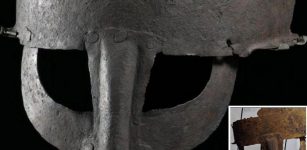 Why Is The Yarm Viking Helmet Special?
Archaeology | Aug 10, 2020
Why Is The Yarm Viking Helmet Special?
Archaeology | Aug 10, 2020




